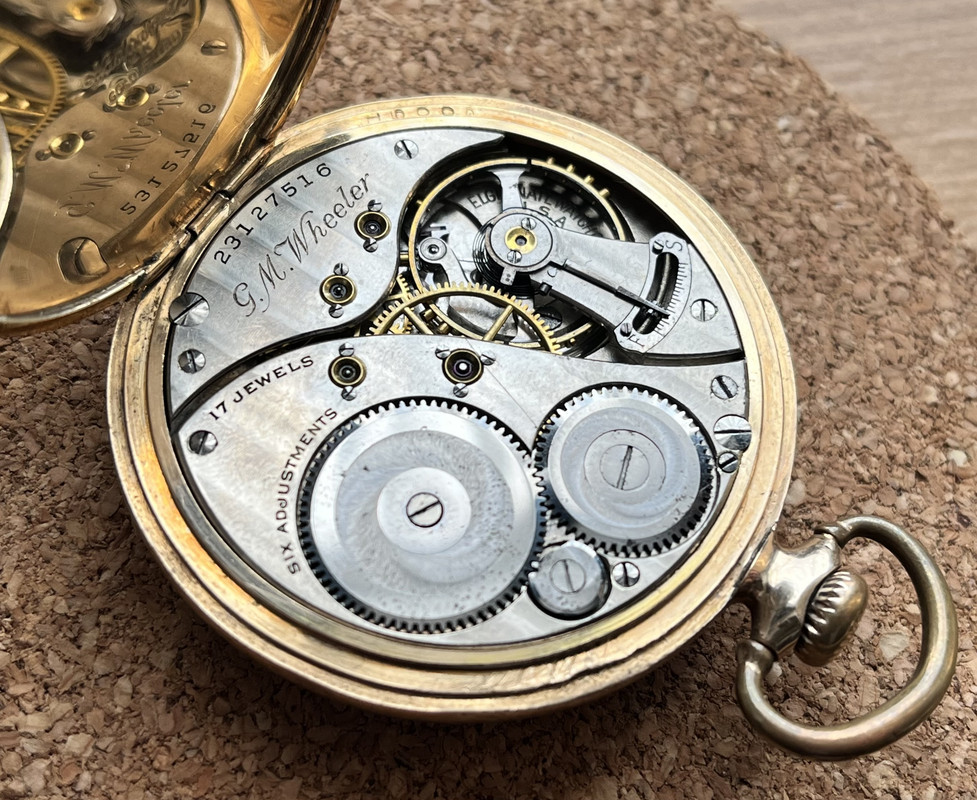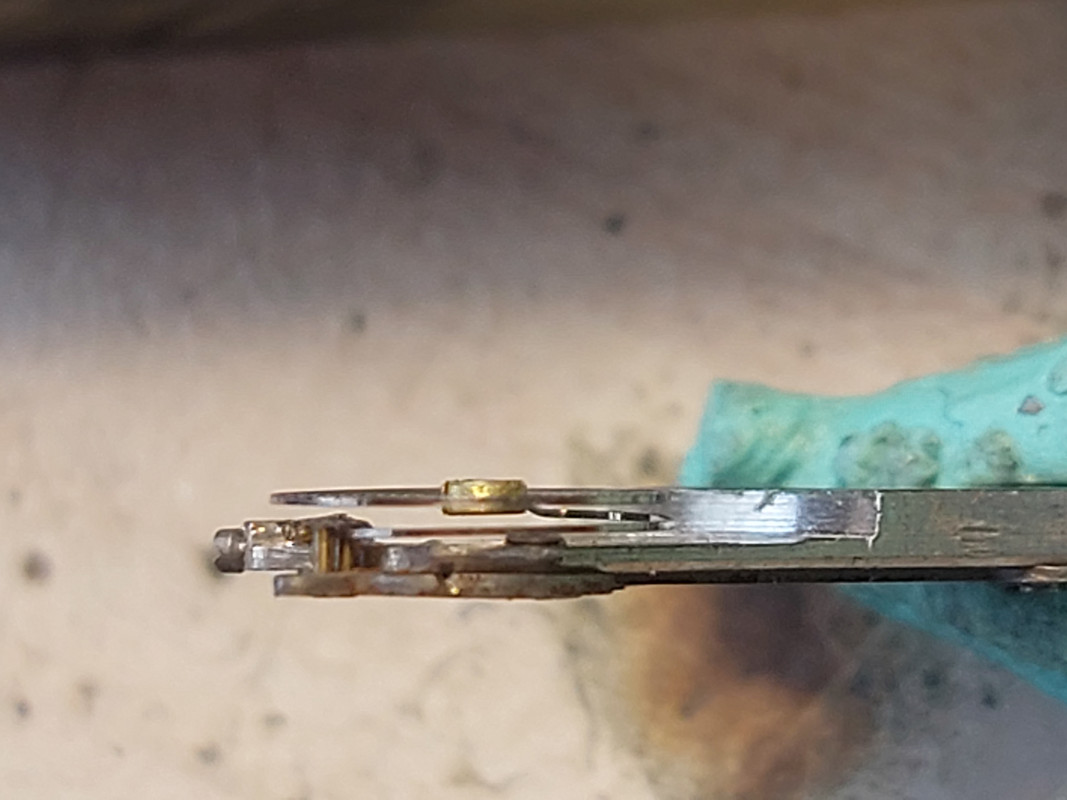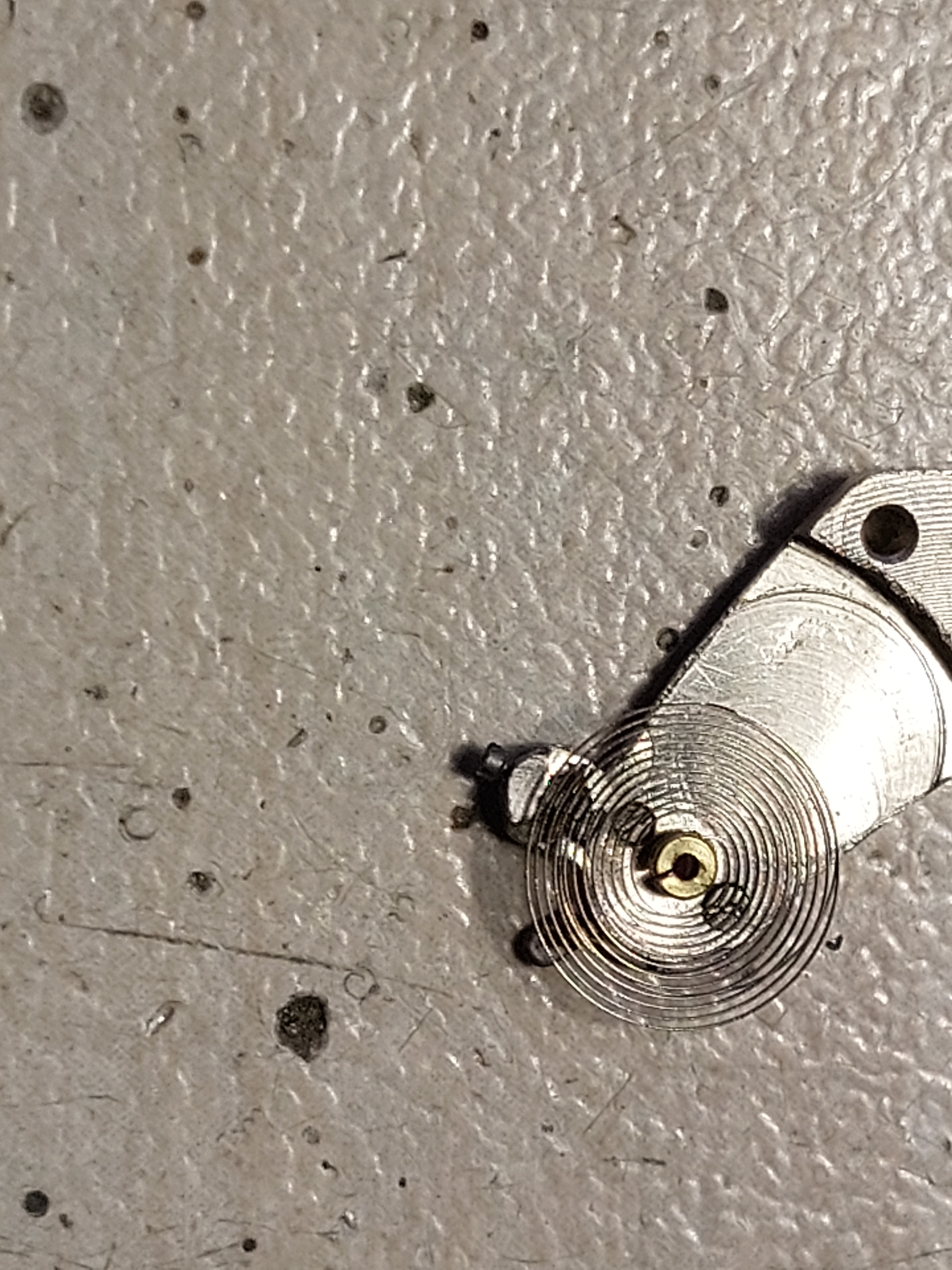OK, I will try...
Little teory at first:
In principle, there can be 3 types of problems in a bent hairspring.
1. Section with local change in radius (bent place), but this area is in the plane of the hairspring.
Easier to fix with tweezers and a needle. When correcting, we strive to keep the area in the plane.
2. Area in which the hairspring (the strip of which it is made) is twisted. This leads to the result htat portion of the spring goes out of the plane of the main part of the spring.
Fixed with two tweezers. The first tweezer holds the beginning of the twisted section, and the second holds the end. We twist between the tweezers in the opposite direction. If the section is long, we divide it into small sections and fix them separately. We try to bring the 'out of the plane' part back in the plane of the main body.
3. A section where the strip turns around, like a turning road (this is like the sharp bending points for making the Breguet overcoil). Can be fixed with one tweezer. We grasp the middle of the curved section and press it lightly against a soft material, such as cork.
They can exist in a damaged hairspring singly or in any combination. When in combination, we start the correction from the highest number, i.e. first 3, then 2 and finally 1. This is because correction of type 3 can lead to the appearance of types 2 and 1, and correction of type 2 can lead to the appearance of type 1, which is normal and we should not despair of that.
If we have only one bent place of type 1 in the middle of the spiral, it manifests itself in the fact that in one place the turns will be closer to each other, and in the other they will be vice versa - farther from each other. So we see 2 defects, but they have one reason. This is so despite the fact that the bent place may be a decrease in radius, or vice versa - an increase in radius. This can easily mislead an inexperienced person where the bent place is. Therefore, before trying to fix it, it is necessary to examine well and determine exactly where the bent place itself is, otherwise we will not fix anything, but on the contrary, we will already have 2 bent places.
With all this in mind, we begin to correct the defective hairspring starting from the first bent place, which is closer to the center, and correcting, we gradually go to the periphery, trying to maintain the interturn distance, concentricity and plane of the spiral as much as possible.
Now to the point:
You don't have type 3, but only 1 and 2. You must only correct the overcoil, this is easier than correcting in the middle of the main body.
For beginning, grasp with the tweezwes where marked with red ovals and press with needle where pointed with red arrow. This is a type 1... The result must be that the part, where the green oval is, will go to the new correct place, where pointed with the green arrow. Then make a picture (from above)
and show the result
![Image]()
















